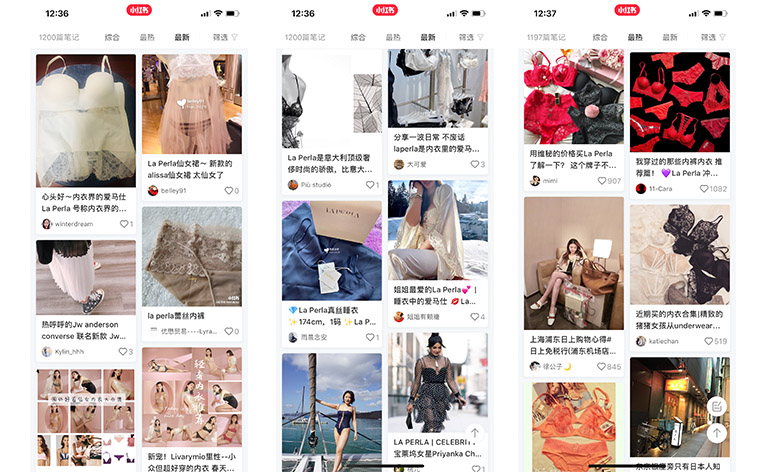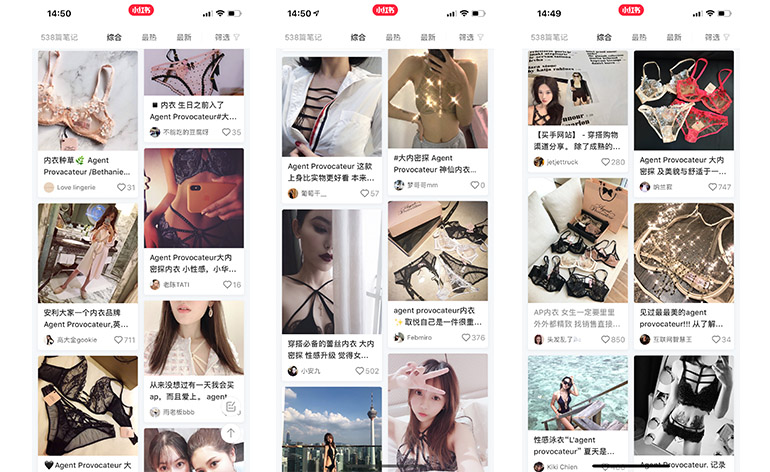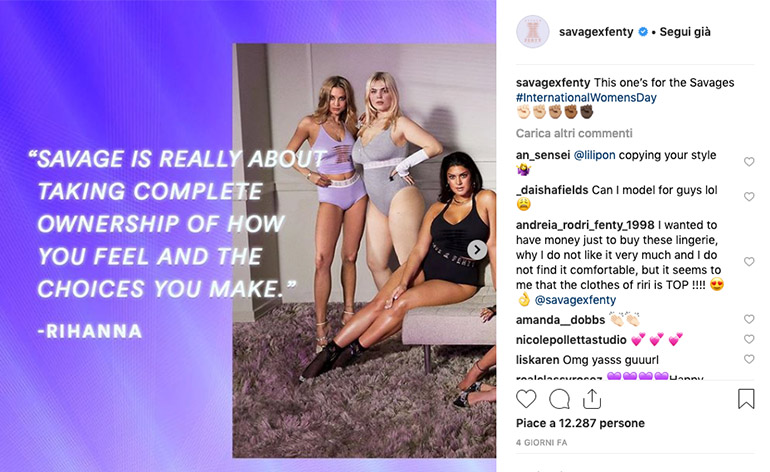
While the idea of overt sexuality no longer sells in the West, it is now a strong driver of lingerie sales in the world’s most populous nation.
The notion of what it means to be “sexy” is facing an identity crisis in the West. These days, even the word "sexy" feels taboo, especially with gender-charged issues and movements like #metoo and #timesup coming to the fore. Western women are no longer subscribing to traditional ideals of what it means to be sexy, and this is seriously impacting the revenues of luxury and premium lingerie brands that have been relying on racy designs and clichéd messages about femininity to drive sales.
Victoria’s Secret – one of retailer L Brands’ flagship labels – is one of them. The American underwear brand has been seeing its earnings slide over the years. More recently, it reported lower-than-expected takings for the first quarter of 2019, with sales falling by 5.14 percent to $2.53 billion. Western millennials instead are flocking to “inclusive” brands like American Eagle’s Aerie and superstar Rihanna’s Savage x Fenty line that promote comfort and body positive messages.
The Age of Female Empowerment
While the idea of overt sexuality no longer resonates with Western millennials, it is just starting to catch on in China. In the past, such blatant displays of sexuality were frowned upon and seen as distasteful. Today, as Chinese society grows more liberal and inclusive, female sexuality is seen as something to be embraced. More than just a means of self-expression, it is also viewed as a form of empowerment. This paradigm shift has brought about a surge in demand for more designs – especially sexy ones.
Sales figures in recent years testify to this. According to an industry report by CBN Data and Tmall, China's online underwear market has grown steadily since 2016, with the lingerie category displaying strongest growth. Millennial women born in the early- to mid-90s contributed to most of this growth, with 60 percent of them coming from China's first- and second-tier cities. “We see huge potential for international lingerie and swimwear brands in China, as the growing local middle class and in particular millennial women want to spend their disposable income on products that make them feel confident and at the same time allow them to express their personality,” said Anita Lu, Vice President of Tmall Fashion, at lingerie tradeshow Interfilière in January this year.
Shedding The Stigma
Up until recently, topics revolving around sexuality were taboo among Chinese women – millennials included. However, as young Chinese women grew more exposed to other cultures and schools of thought, the stigma surrounding public displays of sexuality started to slowly fall away. This has led to a change of mindset, and an awakening of sorts with regards to the way young women dress in China.
According to reports, this has created an interesting opportunity for American and European luxury lingerie labels that have since fallen out of favour on home ground. Previously seen as a practical purchase, underwear available in China’s domestic market was always driven by function rather than form. Simple, pared down aesthetics were the norm and sexier options were considered niche products that came with negative connotations. This is no longer the case. With the growing acceptance of female sexuality in China, women now actively seek out less utilitarian alternatives when purchasing intimates. The Western narrative, however, is now headed in the complete opposite direction. Following decades of celebrating form over function, women are now swapping out their elaborate undergarments for understated, comfortable options.
So while brands like Victoria’s Secret, Agent Provocateur and La Perla steadily lose market share elsewhere in the world, sales are surging in China. According to data from Tmall, the aforementioned brands are topping growth charts on its platform. In addition, Victoria’s Secret was the second top-selling underwear brand on Tmall in 2018. Labels better known for their sensible choices – including Triumph and Uniqlo – trailed behind in fourth and fifth place respectively.
Interestingly, women in China are also beginning to see shopping for lingerie as a treat, and a way to pamper themselves. User-generated posts on social media channels like RED (Xiao Hong Shu), have revealed that self-reward is a huge driver of purchases. Among the posts about Italian luxury lingerie brand La Perla – which many women describe to be “the Rolls-Royce/Hermès of underwear” – phrases like “a woman needs to be refined inside and out” are popular. “European buyers have clear and strong desire for lingerie. Lingerie is a key piece of every day. For China, it might still be for special occasions only... but mentalities are changing,” comments Olivier Pichon, founder of The IPS, a management agency for lingerie brands in China.

Many user generated posts about La Perla on lifestyle platform RED,
deem it as “the Rolls-Royce/Hermès of underwear”
Image: RED
Patriarchy And The Male Gaze
As much as cultural perspectives in China are changing, the country remains a largely traditional and conservative society where patriarchal notions continue to exert their influence. While the feminist debate might be going full force over in the West, this topic is barely broached in China. Chinese women, despite their progressive outlook in many other facets of life, continue to buy into marketing messages that equate beauty with desirability towards the opposite sex. This, in turn, drives their purchase behaviours.
“The lingerie boom only started in China recently, so trends here are still behind that in Europe. There is the cultural angle of seduction in play here, still. Chinese ladies are spending time and money to please men and themselves,” notes Pichon. “For Chinese women, seduction in lingerie is still limited to lace and erotic pieces,” he adds. Seductiveness, however, does take on a slightly different form in China. For instance, user-generated content about British brand Agent Provocateur on RED is often associated with terms like “小仙女 little angel”, “小公主 little princess”, “小性感little sexy”, or “女神 goddess”. In China, the idea of seduction is more sweet and girly, and typically characterised by pink, lacy pieces that underscore the idea of innocence and delicate femininity. A quick search about the lingerie label on Western platforms, however, brings up words like “daring” and “alluring” instead.

User-generated posts about Agent Provocateur on lifestyle platform RED.
“Seduction” emerged as the top key word.
Image: RED

The core message of Rihanna’s popular new brand Savage x Fenty is full body ownership, which differs from China’s more feminine, pro-sexy lingerie narrative.
Image: Savage x Fenty
Definitions of femininity may have evolved in the West, but they remain largely centred around appealing to the male gaze in China. The preferred aesthetic is still that of the slim, small-waisted, and large-chested variety. So while Rihanna’s Savage x Fenty is one of the most celebrated lingerie brands in Western markets today, its strong feminist messages of taking ownership of one’s body (regardless of its shape and size) appeals less to the Chinese.
But does the sexy lingerie boom in China mean a step back in gender equality for the Chinese? Not exactly. In fact, they are probably two sides of the same coin. In both Chinese and international markets, female empowerment is about taking ownership of one’s body and wearing whatever feels right – but the definition of this differs across cultures. How these narratives will unfold in the coming years remain to be seen. But one thing’s for sure: There is huge room for growth yet.
Cover image: Popsugar

